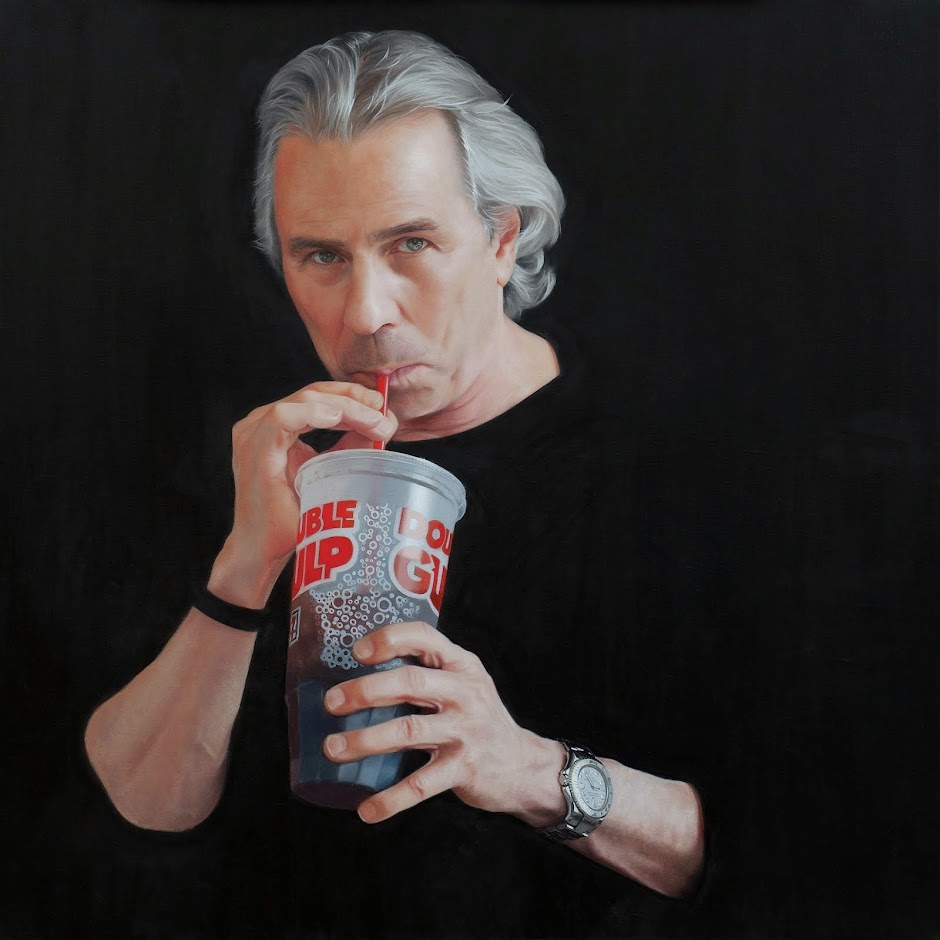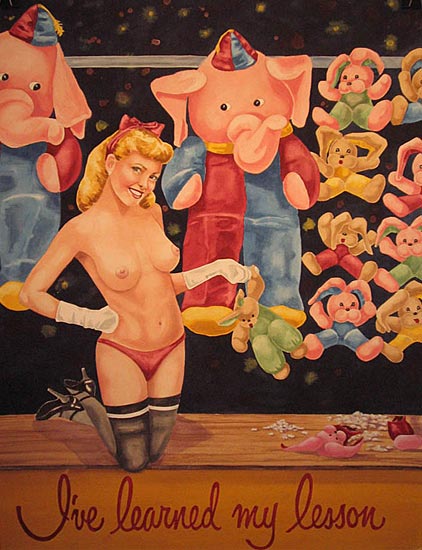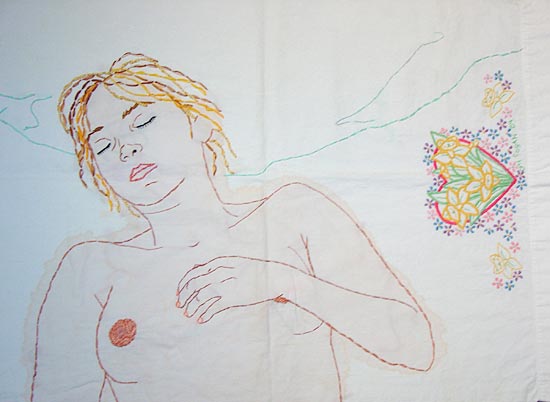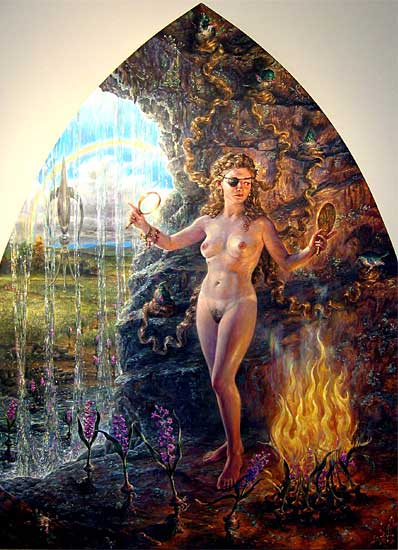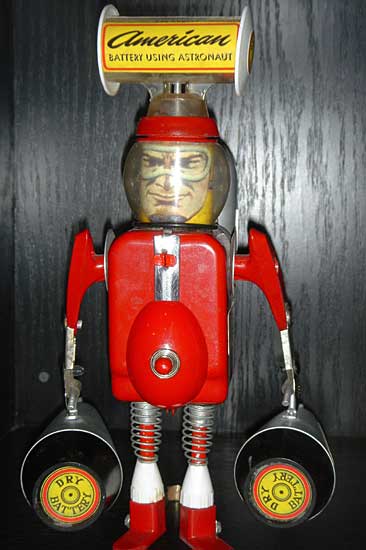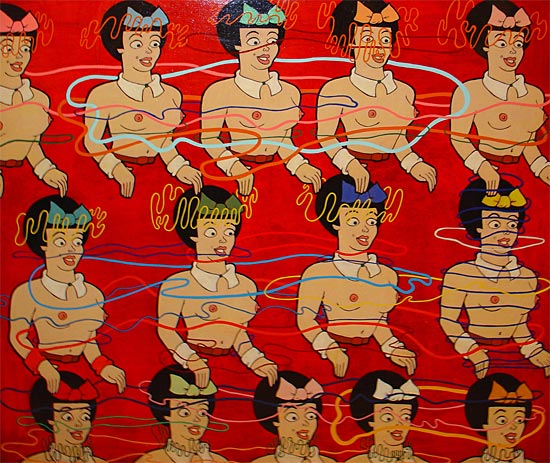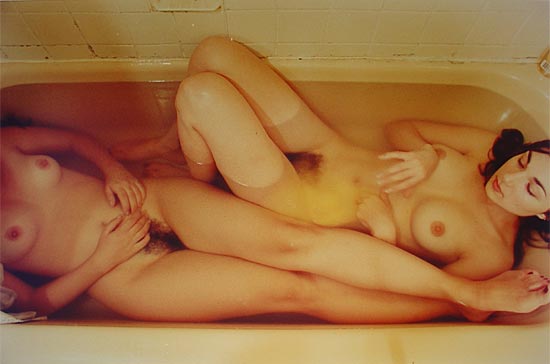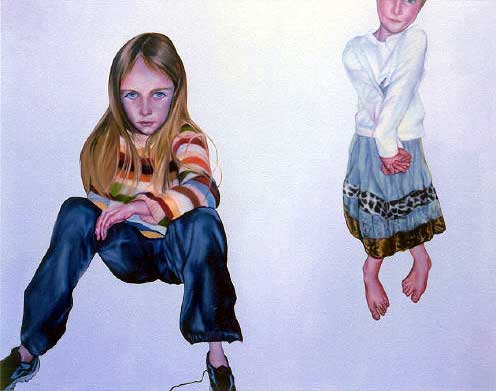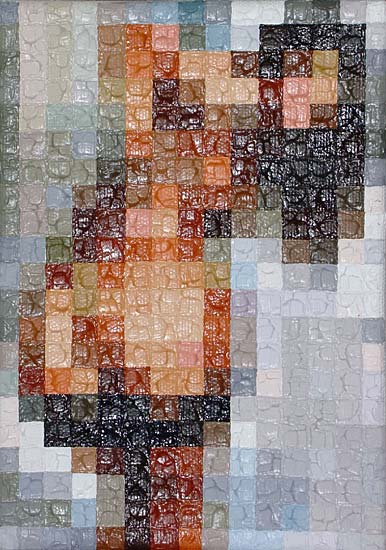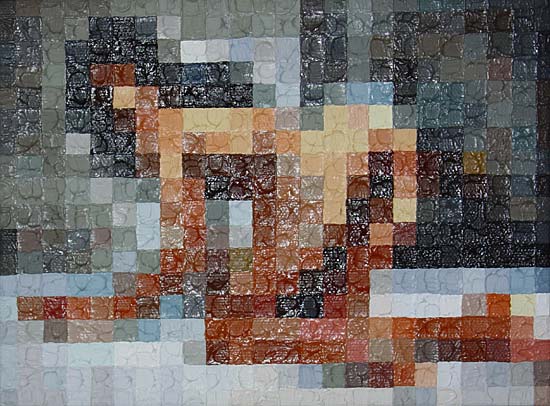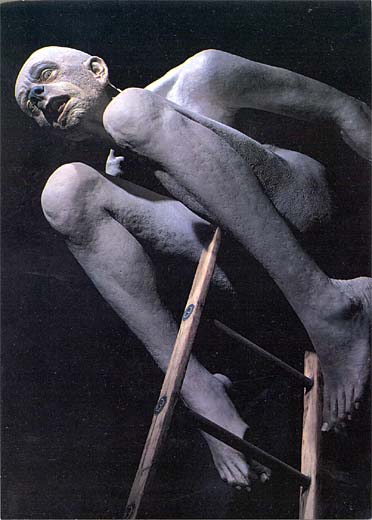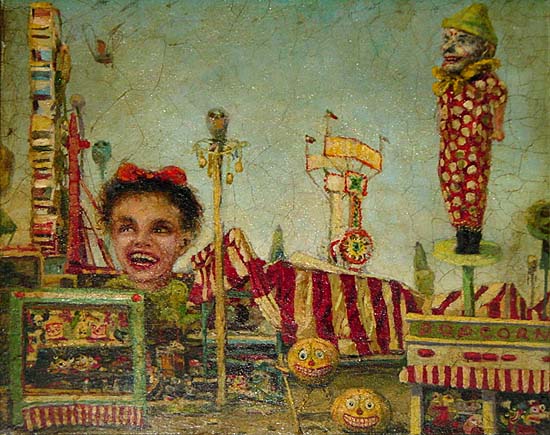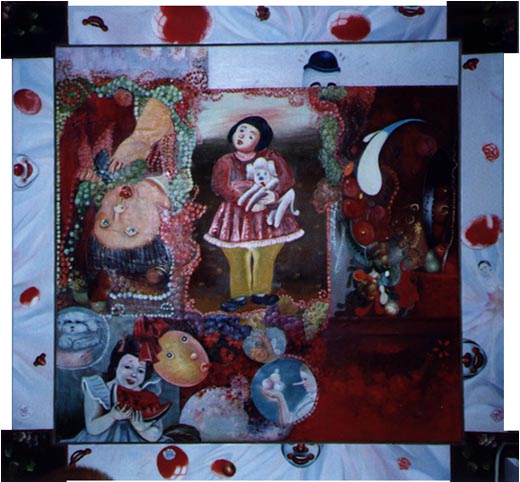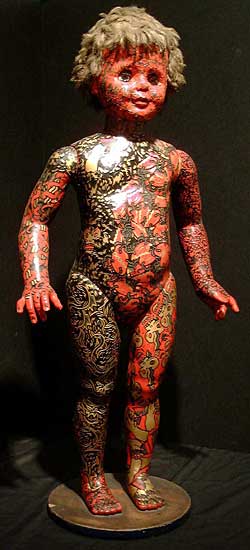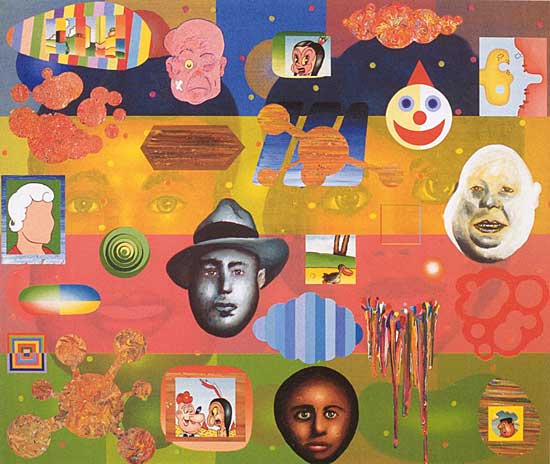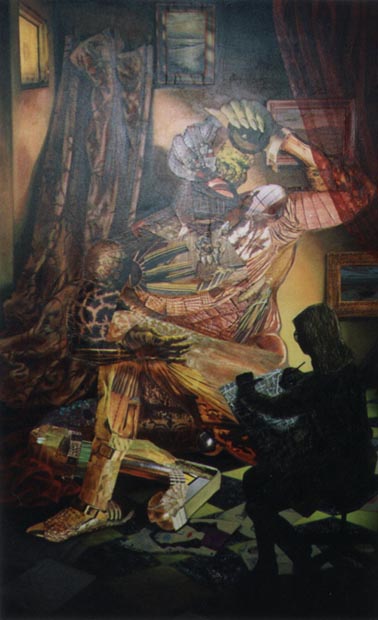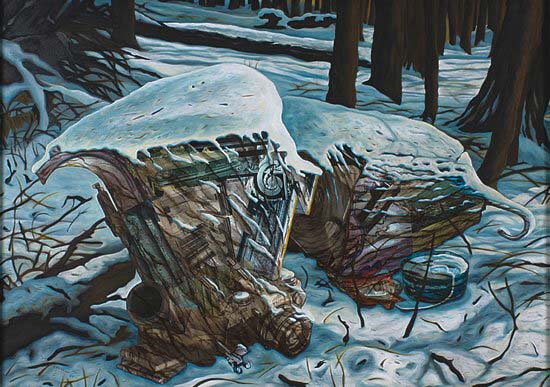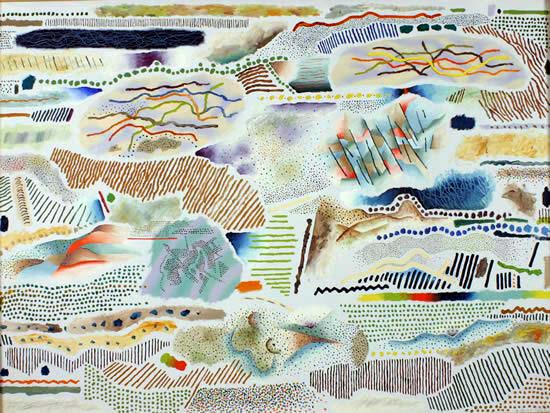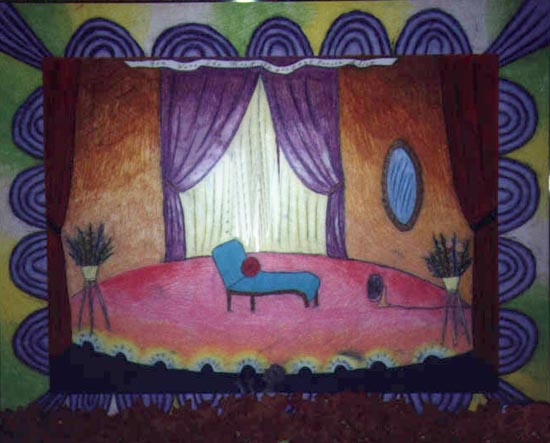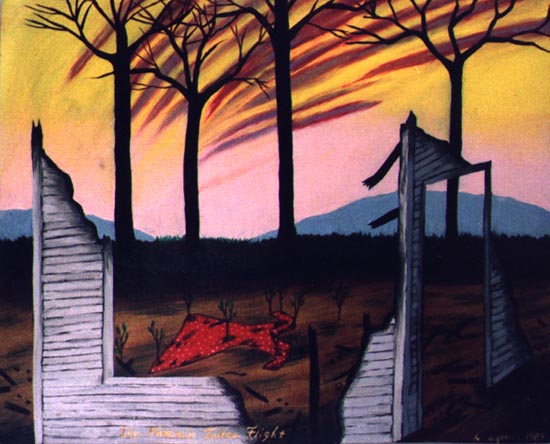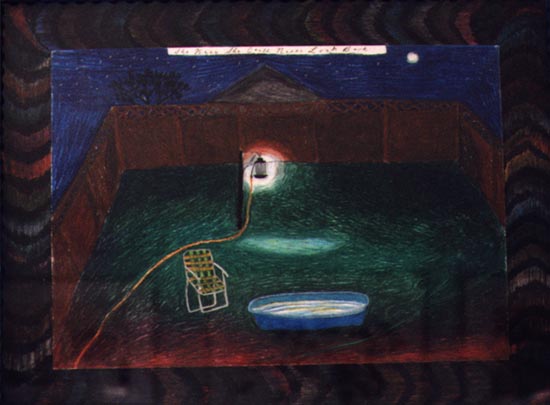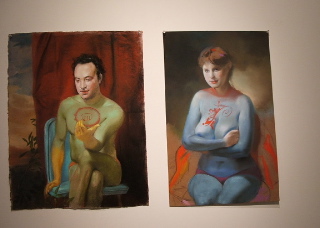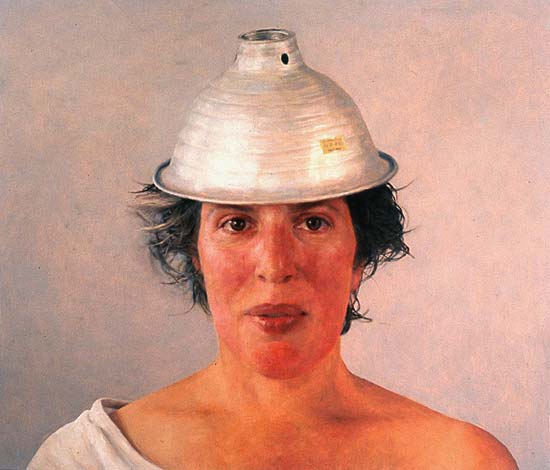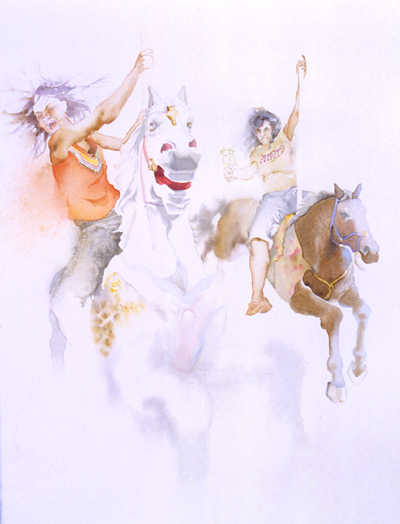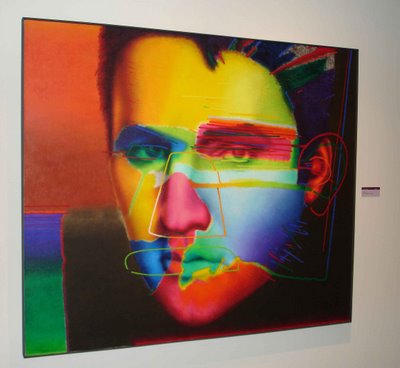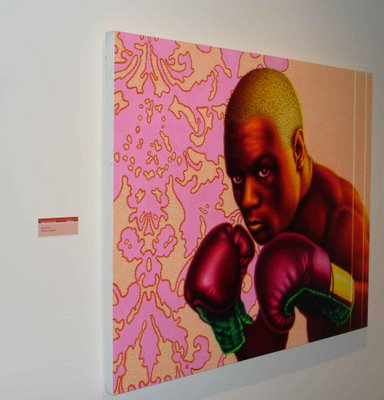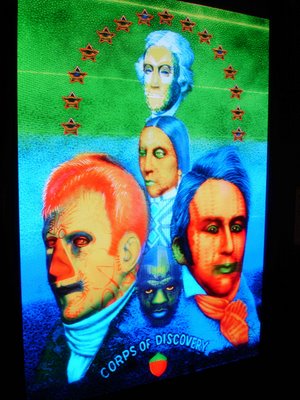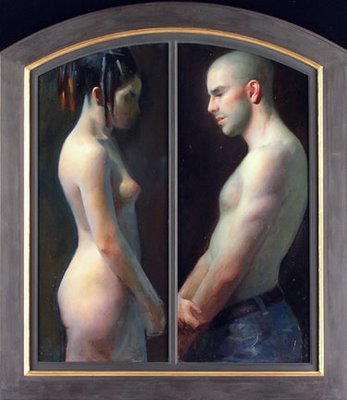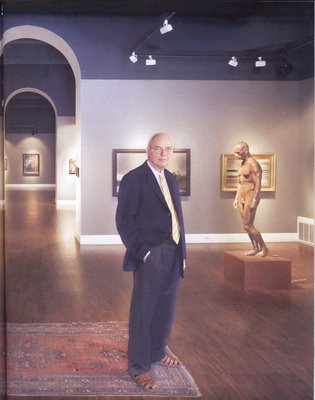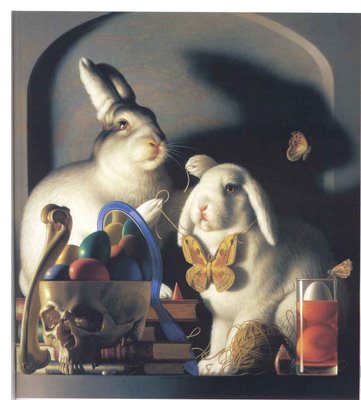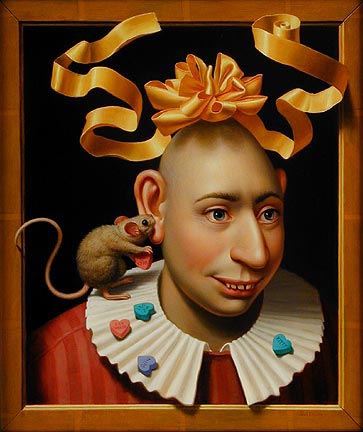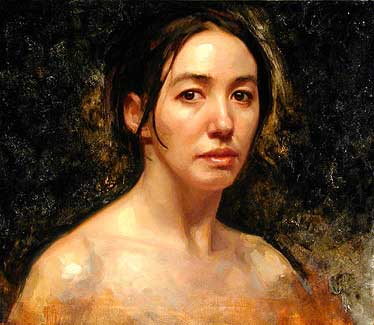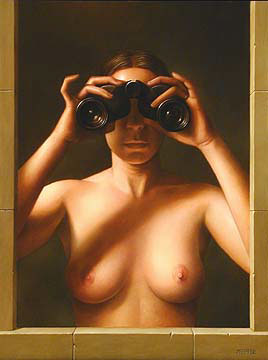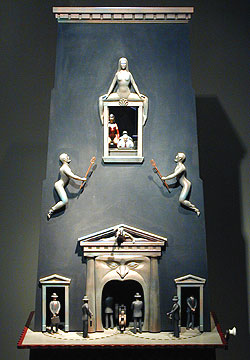Recent purchases from this Gallery include:
MATT DUFFIN
"Call to Duty"
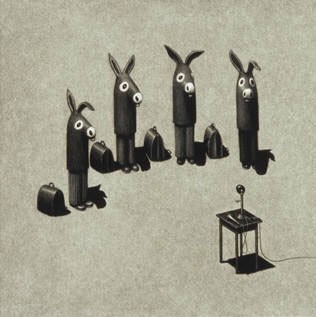
Statement:
Matt Duffin was born in 1968 and grew up in Houston, Texas. He studied architecture, but never practiced as an architect. Instead, he chose to explore the more human themes of solitude and irony through art. His medium has evolved from charcoal to encaustic wax, but he continues to dwell in the realm of dark recesses and stark contrasts. He has lived in Spain, Costa Rica, and Taos, New Mexico and currently resides in northern California with his wife and two small children.
TAD LAURITZEN WRIGHT
"Collage"

ARTIST'S STATEMENT:
The figures, words, and symbolic markings that fill my work are my own synthesis of culture, both past and present, creating what I consider visual poetry. The work is created to remind people of lost thoughts that pass by each of us with or without notice. The work involves a dialogue with the observer, established through interaction. The act of creation is as much a part of a piece as the final product-the formation of ideas, the construction of the surface, the selection and application of media all function as important elements of my process.
The use of language in the work is a study of words as the representation of ideas, objects, and events. This presents an opportunity for viewer interaction, as each i identified word or phrase brings a personal set of visual possibilities to the viewer's mind. Grid paintings offer collaboration between the figurative and the narrative elements of my works. Integrating grids with figurative, written, and abstract images I create an analytical puzzle of the work. These works function as riddles that allow insight into the meaning of the work.
One-line drawings are another example of my efforts to bring interaction to the work. These time-based works involve drawing one continuous line to form various images in a somewhat subjective approach. The intricacy of the line is contrasted by the simplicity of the images depicted. Images are not necessarily readily discernable and the viewer must follow or study the line to discover the content of the piece.
-Tad Lauritzen Wright
SUZANNE LONG
"Underdog"

"Shoe Shine Boy"
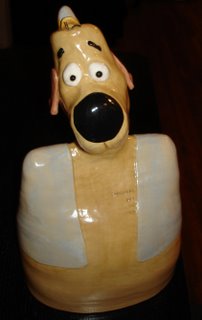
Bio:
education:
BFA, Tyler School of Art, Temple University 1988
exhibitions:
9/2005 V. Breier Gallery, San Francisco, CA., Narratives in Clay
7/2005 Julie Baker Fine Art, Nevada City, CA., "In the Garden"
12/2004 Off the Preserve, Napa, CA., "Group Show," juror, Rene diRosa
06/2004 Epperson Gallery, Crocket CA “What are Dogs For?”
01/2004 Off the Preserve, Napa CA. "All in the Family" Juror, Rene diRosa
11/2003-present Imani Gallery, Napa CA.
10/2003 1212 Gallery, Burlingame CA. "New Works: Suzanne M Long /Michael Cutlip"
08/2003 Fairfield Center, Fairfield CA. "Figuratively Speaking" Curated by Ruth Moss
04/2003 Arts Benicia Gallery, Benicia CA, 2003 Open Studios
03/2003 1212 Gallery, Burlingame CA. "Opening: Group Show"
03/2003 Arts Benicia Gallery, Benicia CA, "Terra Forma", Juror, Arthur Gonzales
02/2003 The Epperson Gallery, Crockett CA, "homosapien"
01/2003 Off the Preserve Gallery, Napa CA, "Painters and Poets" Curated by Ann Trinca
08/2002 Northern Light Gallery, Napa CA, "pipsqueak"
04/2002 Sebastopol Center for the Arts, Sebastopol CA, "Couples" Juror Clayton Bailey
03/2001 Fetterly Gallery, Vallejo CA. "Figures in (e)motion"
05/2001 Marilyn O'Rourke Gallery, Benicia CA. "Naked as an Apple"
12/2000 Agiurre Gallery: Group Show, "Wonder" San Mateo CA.
08/1999 12 Gallery: Group Show. Suisun CA.
06/1999 Epperson Gallery: Group Show. Crockett CA.
05/1996-2003 Benicia Open Studios. Benicia CA.
01/1995-2003 Arts Benicia Gallery: Art of the Community. Benicia CA.
1992 Society of Illustrators Group Show. San Francisco CA.
1991 Society of Illustrators Group Show. San Francisco CA.
1988 Pen rose Gallery Tyler School of Art. Elkins Park PA.
collections:
The Rene and Veronica di Rosa Collection, The di Rosa Art and Nature Preserve, Napa CA.
Kathy Runyon Collection, Santa Cruz CA.
Diana Mercer Collection, Santa Cruz CA.
Ann Trinca, Napa CA.
DON FRITZ
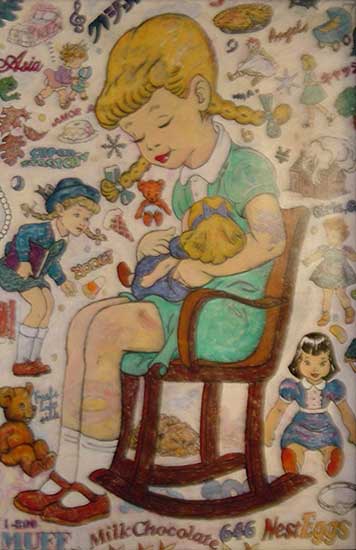
Statement:
My work has evolved from an early interest in Pop Art and icons of American pop culture expressed through popular imagery and cultural artifacts. I explore visual symbol for what it represents both literally and metaphorically.
I am fascinated with the psychological disavowal that is required to live with and accept the pervasive cultural narratives of childhood, power, and gender. Simultaneous acceptance of contradicting information is rooted in these narratives. Childhood, as a concept, is a place charged with fantasies of freedom and innocents. It is addressed in my work by appropriating familiar imagery and reconstructing it on an image surface in a self-reflexive and highly material approach. Through techniques of layering and erasing of visual elements and texts, I present conflicting ideas and develop a trace of my psychological process. In reworking the surface, each layer brings me further into the dialectics of the issues being addressed.
Toys and children's books become objects of ritual when in a culture like ours they are imbued with conscious and unconscious meaning. The various meanings are based in cultural constructs of gender and power. To illustrate the construction of childhood imagery, larger-than-life ceramic sculptures of iconic toys and books demonstrate a banality that comes from being oversized and heavy while also fragile; mimicking the duality in childhood mythology.
I use humor to juxtapose the underlying presence and psychological consequence of the menacing cultural narratives intrinsic in children's toys and books. Power is trivialized and becomes symbolically accessible in stylized toys such as guns, jet planes, and rocket cars where the violence is hidden under their glazed surfaces.
Fantasies of power are closely linked to gender identities. Gender identities that are formed in childhood depend greatly on visual representation in media images and toys. The toys that seem to reflect the innocence and freedom of childhood are embedded with weighty social contracts dictating gender identities. I incorporate images of toys and children performing gender roles in combination with ghost images into my investigations of American pop culture and its fantasies to show the disparity between our idealized fantasies and our physical based realities.
- Don Fritz
MARNIE SPENCER
"Between the Devil and the Deep Blue Sea"
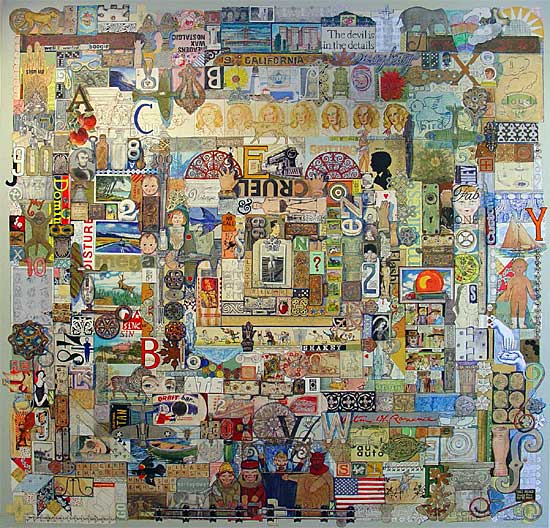
Statement:
For the last few years I've made a deliberate move away from abstract subjects to recognizable ones. Here's a small sampling. These works are a kaleidoscope of subjects and visual thoughts – a conglomeration of junk yard items, old toys, games, architectural salvage, random letters,and numbers. I'm interested in the specific, commonplace unaltered look of these objects. Each one tells a life story all by itself and while I don't want to alter the intrinsic look of the objects I do enjoy arranging them in different, often implausible juxtapositions. Presented together these components suggest a type of ocular language, a synergistic relationship based on or becoming folk lore or ritual or religion – a deliberate contrast to our complicated times with our computers and our techno-advances and the Internet and man vs. man pushed to the nth degree. I hope the viewer sees a life cycle chronicle of progress and change and time passing. I want past and present to merge as these memory paintings sketch a tribal blueprint for a mental and emotional scavenger hunt deep into the heart of American curiosities that evoke the past and trigger the viewer's memories; there's a certain amount of nostalgia, a recycled moment here and now (the Proustian thing); lastly, a prescient remembrance of how it all began way back when.
TULLMAN COLLECTION TULLMAN COLLECTION TULLMAN COLLECTION
